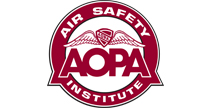Pilot ignores warning, launches into thunderstorm
 Although thunderstorms can develop any time of year, the peak season for most of the United States is summer. As we take to the skies during the next few months, it’s important to understand and respect the many hazards these storms can produce. The violent, airframe-shattering turbulence in the belly of the beast is only part of the story. Less dramatic but no less dangerous are the strong downdrafts, abrupt wind shear, and roiling gust front that can doom a flight just moments after takeoff—especially when the pilot ignores warnings and launches directly toward the storm.
Although thunderstorms can develop any time of year, the peak season for most of the United States is summer. As we take to the skies during the next few months, it’s important to understand and respect the many hazards these storms can produce. The violent, airframe-shattering turbulence in the belly of the beast is only part of the story. Less dramatic but no less dangerous are the strong downdrafts, abrupt wind shear, and roiling gust front that can doom a flight just moments after takeoff—especially when the pilot ignores warnings and launches directly toward the storm.
On the night of Jan. 11, 2005, the pilot of a Cessna T206H Stationair attempted to depart Huntsville International-Carl T. Jones Field in Huntsville, Ala., in the face of an approaching level-five (now reported as “extreme”) thunderstorm. The aircraft crashed into a wooded swamp less than a mile from the end of the runway, killing the 1,400-hour, instrument-rated pilot and his passenger.
The pilot had called the Anniston Automated Flight Service Station shortly before 6 p.m. to obtain an abbreviated weather briefing and file an IFR flight plan. At 6:14 p.m., he contacted the Huntsville ground controller and advised that he was ready to taxi to Runway 18L. The controller asked him to confirm that he had received the current ATIS information, which the pilot acknowledged.
The ground controller then asked the pilot to stand by for a weather update. After a brief pause, he radioed the pilot and stated, “Alright, I’m looking at the weather radar over here. There’s level-five weather activity that is south of the airport moving to the northeast, so it’s going to be crossing the runway south of the airport about three miles.”
The controller suggested the pilot consider departing in the opposite direction, from Runway 36R, following a delay for inbound traffic. The pilot replied, “Uh, sir, we’re ready to go at one-eight left. If we can go ahead and get it, and get vectors around that [the weather]—if you could do that right off the end of the runway.”
The ground controller agreed to coordinate the pilot’s request and cleared him to taxi to Runway 18L. Two minutes later, the tower cleared the flight for takeoff and assigned the pilot a left turn to heading 090. At 6:18 p.m., shortly after the Stationair departed, the tower controller attempted to contact the pilot but received no reply. When the pilot failed to respond to subsequent radio calls, ATC alerted rescue personnel. The wreckage was located about one nautical mile east of the airport.
Radar data indicated the airplane climbed no higher than 300 feet agl before the crash. A motorist on a road near the south end of the runway reported that he saw the Stationair take off and make a 90-degree left turn. He stated that the airplane then headed due east with its wings level, but it was “too low” and “losing altitude quickly and was still going very slowly.” The witness then lost sight of the airplane behind trees. He stated that it was raining at the time with gusty winds.
An NTSB examination of the wreckage found no evidence of mechanical failure. The board determined that the accident’s probable cause was the pilot’s decision to attempt flight into known adverse weather, which resulted in an in-flight encounter with a thunderstorm.
The accident pilot had been warned about level-five radar echoes within three miles of the departure end of Runway 18L. Level-five cells are intense thunderstorms typically associated with severe turbulence (up to 20 miles from the echo’s edge), lightning, hail, and organized surface wind gusts. They can also cause microbursts—small but powerful downdrafts that spread outward in all directions upon reaching the surface, resulting in dangerous vertical and horizontal wind shear.
According to the Aeronautical Information Manual, “Microburst wind shear may create a severe hazard for aircraft within 1,000 feet of the ground, particularly during the approach to landing and landing and take-off phases.... The aircraft may encounter a headwind (performance increasing) followed by a downdraft and tailwind (both performance decreasing), possibly resulting in terrain impact.”
Microburst downdrafts can plunge to earth at 6,000 feet per minute. Horizontal winds near the surface can be as strong as 45 knots—resulting in a 90-knot shear (headwind to tailwind change for a traversing aircraft) across the microburst. Attempting to launch and climb out in these conditions is a dangerous gamble. Better to cancel your clearance, shut down, and try again after the weather moves on.
Related Links
Weather Wise: Thunderstorms and ATC interactive course
Thunderstorm Awareness resources
Thunderstorm Weather Theory Safety Quiz